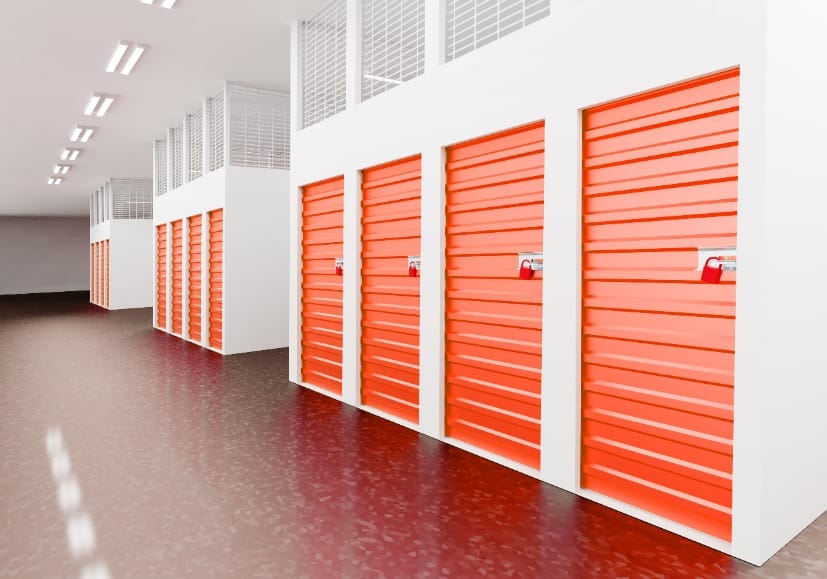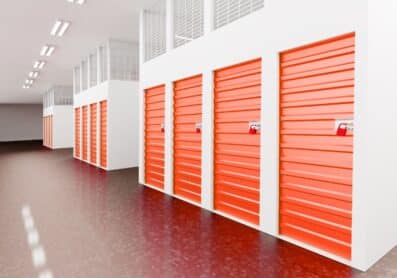Learn how to store a mattress the right way, whether you need to keep it in a storage unit, or at home.
So many of us ditch our old mattress, whether it’s because we’re moving, upgrading to a new one, or simply running out of space. But unless your mattress is worn out, sagging, or affecting your sleep, there’s no need to toss it away. Instead, consider storing it properly until you’re ready to use it again.
That said, keeping your mattress in good shape takes more than just stuffing it into a plastic bag and tossing it in a corner. Follow these seven steps to store your mattress the right way and keep it clean, dry, and in top condition.
Key Takeaways
✔ Thoroughly clean and dry your mattress before storing it to prevent mould and odours.
✔ Use a breathable, high-quality mattress cover to protect against dust and moisture.
✔ Store the mattress in a cool, dry place, away from direct sunlight and extreme temperatures – climate-controlled storage units are ideal.
✔ Transport the mattress properly – keep it inside a vehicle, not strapped to the roof to prevent damage.
✔ Never drag, fold, or bend the mattress, as this can cause structural damage.
✔ Store it flat, not upright, to maintain its shape and support.
✔ Check and rotate the mattress occasionally to prevent sagging or settling.
1. Give Your Pillowcases, Sheets, and Mattress a Good Clean
Your mattress has probably picked up its fair share of dust, dirt, and allergens over time, even if you clean it regularly. Sweat and stains? Yep, they sneak in too.
Before you store it, give both sides a good vacuum to get rid of any dust or debris. For stubborn stains, try an upholstery cleaner or a bit of baking soda with a scrub brush. Just stick to dry cleaning methods – too much moisture can lead to mould and mildew.
Pillowcases and sheets can usually go in the washing machine, but check the labels first to be sure.
2. Wrap Your Mattress in a Protective Cover
After drying your mattress, wrap it in a breathable mattress cover to keep it protected. These covers shield your mattress from dust, dirt, and moisture while still allowing airflow, which helps prevent mould.
Avoid using plastic covers or tarps for long-term storage, as they can trap moisture and lead to mildew. Instead, go for a breathable fabric cover or a vinyl mattress protector—these provide reliable protection while allowing airflow to keep your mattress in good shape.
Most mattress covers will do the job, but check the material and durability before buying—you’ll want something thick enough to avoid rips or tears during storage.
3. Avoid Folding or Bending Your Mattress During Transport
It’s seemingly convenient to fold or bend your mattress to make moving easier, but doing so can crease and put stress on the coils or inner materials. The result? A permanently damaged mattress.
Instead, always keep your mattress flat and fully supported during transport. If you’re moving it in a vehicle, lay it down in the cargo area rather than strapping it to the roof, which can cause it to sag or warp.
You can also use ratchet straps or ropes inside the vehicle to keep your mattress from shifting or bending.
4. Ensure Your Storage Area is Clean, Dry, and Secure
Now it’s time to pick the perfect spot to store your mattress. Most people opt for one of the following:
A Storage Unit
Storage units are, hands down, the best option for long-term storage. Many offer climate-controlled spaces, which help maintain a consistent temperature and prevent mould or mildew growth.
Homeowners typically use storage units when moving, downsizing, or storing items they don’t need daily but want to keep in good condition. If you’re storing your mattress for months or even years, this is your safest bet.
Your Home
Most people opt to store their mattress in their garage or basement. But be careful, these spots can get dusty, damp, and musty, which isn’t great for a mattress. If you must store it there, make sure it’s raised off the ground and covered with a breathable mattress protector to reduce moisture buildup.
Another option? Under your bed. Just make sure it stays clean and dry.
5. Move the Mattress Safely into Your Storage Unit
Moving a bulky, heavy mattress isn’t always easy, but a few precautions will keep it safe. Follow these steps to ensure it reaches your storage unit in one piece:
- Get some help – Enlist a friend or family member to make lifting and carrying safer and easier.
- Avoid dragging it – Once at the storage facility, lift it carefully to prevent tears and scratches from rough surfaces.
- Use storage facility assistance – Use storage facility equipment or assistance – Most facilities provide trolleys, dollies, and loading bays, with staff typically available to assist with unloading or equipment use.
Taking these steps will help keep your mattress in good shape during the move and while it’s in storage.
6. Always Store it Flat, Not Upright
When storing a mattress, always lay it flat on its back. Storing it upright, sideways, or vertically can strain the internal structure, leading to sagging and uneven wear. This is especially important for memory foam and hybrid mattresses, as their foam and coil layers need even support to maintain their shape.
If your mattress is too large for your storage space, it’s worth upgrading to a slightly larger unit rather than risking damage. A little extra space is far better than ending up with a misshapen or weakened mattress.
7. Protect Both Sides
Your floor may be spotless but you’ll want to protect your mattress from damp and cold. Lay a sheet or tarp under the mattress, and do not place any objects on top of it! This can cause indentations and damage the mattress.
8. Rotate the Mattress Occasionally
Rotate your mattress every 3–6 months to even out wear and prevent sagging. This is especially important for innerspring mattresses, which can develop indentations. Simply turn it head-to-foot to redistribute weight evenly.
If your mattress is stored in a sealed plastic cover, open it occasionally to allow air circulation. This helps prevent moisture buildup, mould, and mildew, especially in humid environments or non-climate-controlled storage units.
Frequently Asked Questions
How do you store a mattress against a wall?
If you’re storing a mattress upright against a wall, follow the same steps: clean it, keep it dry, and use a breathable cover. Just make sure it’s evenly supported to prevent it from sagging or warping over time.
That said, storing a mattress upright long-term isn’t ideal as it can cause lumps, dents, or a misshapen structure. If possible, store it flat to keep it in the best condition.
How do you store a mattress topper?
Start by cleaning your mattress topper, and vacuum both sides and spot-clean any stains. Once dry, roll it up instead of folding to avoid creases, then place it in a breathable storage bag or a vacuum-sealed bag if space is tight.
Store it in a cool, dry place, away from direct sunlight. Avoid placing heavy items on top, as this can cause deformation. If possible, keep it flat or upright in a well-ventilated area to prevent mildew and odours.
How long can I store a mattress in a box?
Spring mattresses can be stored in a box for long periods, but foam or latex mattresses should only remain rolled up for 1 to 2 months. Any longer can cause permanent compression and structural damage to your mattress.
Can you stack mattresses during storage?
Stacking mattresses is not recommended, as the weight of the top mattress can cause lumps, dents, or permanent damage to the one beneath it. Additionally, moisture can get trapped between mattresses, causing mould and mildew growth.
If stacking is unavoidable, place a breathable, supportive barrier (like wooden slats or cardboard) between each mattress, and use a breathable cover to reduce moisture buildup. Also, avoid stacking too many mattresses, as excessive weight can affect their shape and support over time.
What is the ideal temperature for storing a mattress?
If you’re using a storage unit, choose a climate-controlled space to keep conditions stable. The ideal temperature for mattress storage is between 18°C and 19°C, which helps prevent material degradation, moisture buildup, and mould growth.
Let Henfield Help Find the Perfect Storage Solution for your Mattress
Henfield Storage offers secure, affordable storage units across London and the UK for all your household items, including mattresses. Our team can help you choose the right unit size and even collect your mattress from your home for storage at our facility.

With our free collection service, you won’t have to worry about transport – we’ll handle it for you. Contact us today to learn more about our hassle-free storage solutions!



